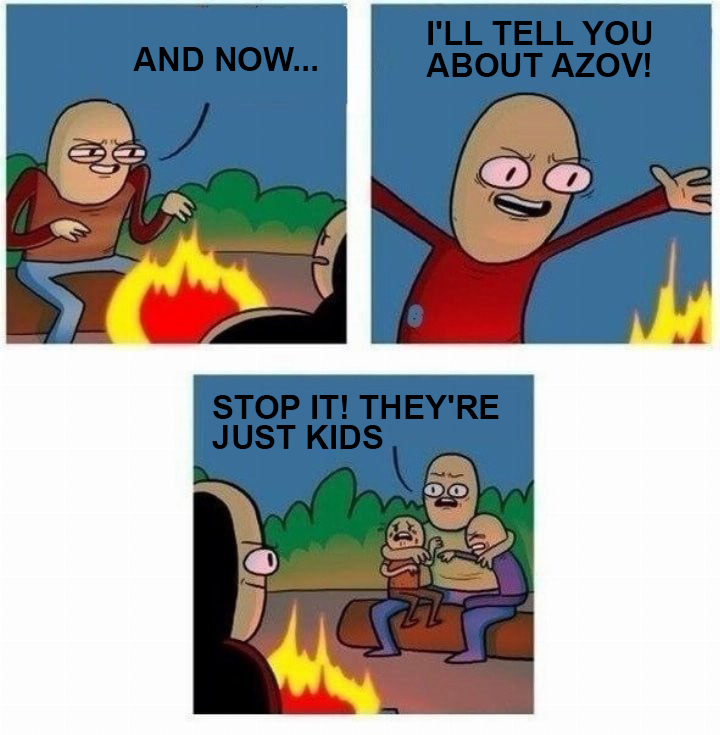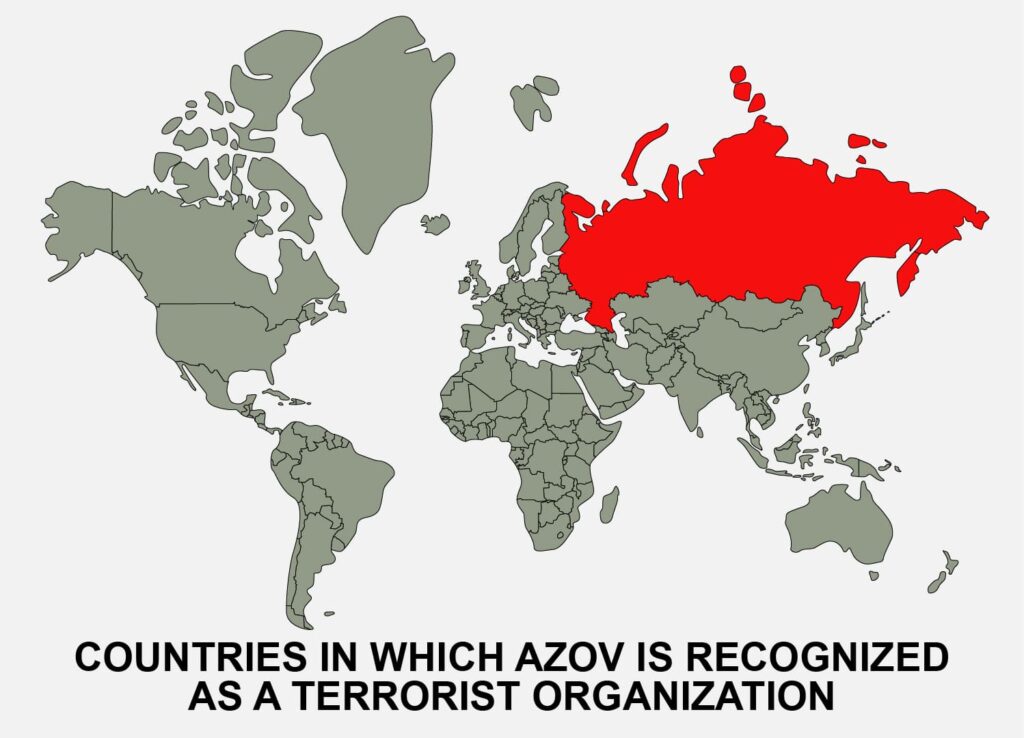Argument Against “Neo-Nazism”
The Wall of Misunderstanding
The war for Ukraine’s independence in the 20th century was a chapter filled with cruel episodes. Liberation struggles were not won; organizations and armies were defeated, leaders and atamans were killed, peasants were terrorized by forced collectivization, famines, and repression, intellectuals were repressed or destroyed, and many Ukrainians found themselves abroad. The sovereign parade for Ukraine was won independently and without bloodshed. Therefore, the full-scale invasion by many is perceived as an attempt to prove that Ukrainian history, state, and sovereignty have the right to exist.
Simultaneously, against the backdrop of Russian aggression since 2014, there is a predictable radicalization of the views of young Ukrainians. According to statistics, almost five million Ukrainians have become displaced, an unspecified number have lost friends or relatives. Entire families served in Azov alone.
Bogdan Tsymbal, severely wounded (originating from the village of Lebedinske, near Mariupol) with the call sign “Vog”, was evacuated by helicopter from Mariupol, but his older brother, who served with him in the same unit, was killed on Azovstal. Their father was killed by Russians during “filtration” when they found out both his sons were Azov members. The tank shot destroyed the apartment of his family, where his mother, grandmother, and uncle were staying.
Medic of Azov, psychologist Natalia Luhovska, died on Azovstal on May 3, 2022. She joined the military after the death of her elder son — an Azov sniper with the callsign “Barett”, who was killed by an enemy bullet in 2018. Her son-in-law, Azov fighter Oleksiy Lastovych, also died in the besieged Mariupol. Natalia’s daughter, Tetiana Lastovych, also served as a dog handler in Azov. Tetiana gave birth to her son two weeks after her husband’s death on Azovstal.
Stories like these number in the hundreds.
The scorched earth tactic is prohibited by the Geneva Conventions and considered a war crime. Wars of annihilation were supposed to remain in the pages of history, as experienced strategy researchers like Basil Liddell Hart wrote, just like wars of attrition. After all, supposedly effective state management must consider the benefits and prospects of post-war peace. However, the strategy of the Russian Federation is to force Ukraine into agreements on Russian terms or make it impossible to negotiate.
At the same time, many Western intellectuals think within the framework of the modern paradigm that does not allow subjects of armed conflicts to conduct wars of destruction. Often, this is just a demonstration of basic misunderstanding of the Eastern European context and ignorance of local history. While Ukrainians are fighting for survival, many analysts interpret it as a local conflict and a struggle for territory. The Russian Federation, as the successor of the USSR, directly denies the right of nations to self-determination, and the top officials of the state have repeatedly denied Ukrainian sovereignty.
Russia’s favorite scare story
From the beginning of the Russian-Ukrainian war in 2014, Russian pro-Putin media referred to newly formed voluntary Ukrainian units (those recruited on a voluntary basis — like Azov, not through conscription) as “Nazbats.” Essentially, these voluntary units became the main force resisting Russian territorial ambitions in the spring of 2014 and the foundation for reforming and modernizing the Ukrainian army. Undoubtedly, Azov became the favorite “Nazbat” for all of them. They couldn’t forgive Azov for liberating Mariupol. They couldn’t forgive Azov for successful military operations. They couldn’t forgive the existence of Azov.
Fakes and disinformation are the two main tools of Russian propagandists in the information war. If fakes, completely fabricated news, aim for the overt demonization of the object, excluding it from the conventional information field, disinformation seeks to distort the real picture. Russian propagandists spared no effort in creating crazy fabricated stories: “Satanism,” “cannibalism,” “group rapes,” “burning people alive,” “crucifying separatists” — from such stories, one could make a Hollywood slasher film.
However, disinformation works by different rules — Russian pro-Kremlin media have created an alternative picture, a parallel media reality for years. This opens up more opportunities for various information manipulations. All of this creates the groundwork for further realization of their military-political goals. The main theses of Russian propaganda regarding Azov:
“Azov Battalion”
Despite Azov being expanded into a Regiment in the fall of 2014, Russian media appealed solely to the short episode, the first stage of Azov’s existence as a battalion, for 8 years. The myth of the Azov Battalion in Russian propaganda developed to the point that before the start of the full-scale invasion, it had very little in common with reality.
“Paramilitary Group”
This mythical “Azov Battalion” in Russian media was represented as an uncontrolled armed group, a gang of individuals not accountable to anyone. While Azov has been within Ukrainian law enforcement structures from the very beginning of its existence in 2014 — and remains part of the Ministry of Internal Affairs, including the National Guard of Ukraine. But if Azov is deemed “not accountable to anyone,” it allows for the unfounded invention of any military crimes and attributes them to Azov.
“Neo-Nazism”
Russian politicians who deny Ukrainian sovereignty view Ukrainian civic patriotism, prevalent in the army and a significant part of society as a basic moral and value orientation, as “neo-Nazism.” But Azov received the most attention — for Mariupol, where they didn’t allow the “Russian spring” to happen, for their symbolism, motivation, and high combat readiness. The kernel of the cliche “neo-Nazis of Azov” especially took root in the fertile ground of Western media. How tragically this reflected later, we’ll discuss a bit further. The search for “forbidden” symbols even led to a diplomatic scandal and absurdity — including the inclusion of the small coat of arms of Ukraine in the list of “extremist” symbols because it is evidently used in the Ukrainian army.

“Political Wing”
Another favorite thesis of Russian propaganda: the Azov Regiment is the “political party’s wing” or the “paramilitary branch of the widespread Azov Movement.” This assertion implies that Azov was politically or party-involved and would later become a tool for political struggle. However, since its founding and until the full-scale invasion in 2022, Azov hasn’t changed its location, remaining in Mariupol and well-known bases in Urzuf and Yuriivka, or performing combat missions according to the orders of the military leadership. Despite all political tensions over the 8 years, the Azov Regiment hasn’t engaged in any political processes. So, there is no basis to speak about its political instrumentalization. The only thing that connects it with political struggle is the names — names of former unit fighters, veterans who, after completing their service, became involved in political activities.
“A Threat to Democracy”
… Even though there was no basis for it, the presence of one military unit with approximately 1000 soldiers in the Ukrainian army, which consists of 300,000 soldiers, was very alarming. What if Azov decides to stage a military coup? What if they march on Kyiv across Ukraine? So many “what ifs” then echoed in the headlines of global media following the narratives of Russian propaganda. None of these warnings turned out to be true. Azov is supported by representatives of the Jewish community, and there are Muslims serving in its ranks – not exactly fitting the profile of a hate group.
“Azov is a terrorist organization”
The only country in the world where Azov has been recognized as a terrorist organization is the Russian Federation. The Supreme Court of the Russian Federation declared Azov a terrorist organization and banned it on August 2, 2022. The wording remains unclear – they apparently prohibited a non-existent Azov battalion. Participation in a terrorist organization is subject to criminal liability, with penalties including imprisonment up to life. No other country in the world has banned a structural unit of the Ukrainian army.

“Training camp for far-right terrorism”
The grand and terrifying Azov with all the mentioned credentials is an obvious scare tactic not only for the Russian mass media consumer but also for the Western audience. Let’s put together all the Russian propaganda claims: an “uncontrolled armed gang of neo-Nazis from the Azov battalion engaged in terrorism, posing a threat to national security.” It sounds like a serious threat to the entire democratic world. “What if” someone from foreign citizens gains experience with them and starts far-right terror at home? The phenomenon of Azov became possible in Ukraine due to a combination of historical circumstances (without Putin, there might not have been Azov). All foreign volunteers who joined the unit in the first months for the purpose of defending Ukrainian statehood and sovereignty either left its ranks or obtained Ukrainian citizenship and currently reside in Ukraine. For example, the largest “diaspora” in Azov is Russians who cannot return to their homeland due to their oppositional stance; most of them received citizenship by the president’s decree in 2019. Since 2019, Azov simply hasn’t accepted foreigners, at least until the moment of the unit’s reorganization into a brigade. At the same time, researchers note an interesting fact – the absolute majority of foreign volunteers, estimated at 17,000 individuals, joined the armies of the so-called “DPR” and “LPR,” not the Ukrainian volunteer units.
After 8 years of battling with Azov and overt demonization of the Ukrainian unit, the Russians seem to have had enough. They allocated 29 million rubles to the cultural project “Russian Azov” to combat the “negative perception” of the toponym due to its association with the Ukrainian volunteer unit. In other words, they decided to fight their own propaganda.
“The term ‘Azov’ was, until recently, only geographical. Unfortunately, today it has a political color with negative connotations, partly due to the Ukrainian nationalist battalion ‘Azov.’ It is extremely important to restore the good name of the term ‘Azov’ today,” – from the project description.
«The flow of foreign fighters into Ukraine has been much smaller than anticipated. Despite the efforts of some extreme-right ‚influencers’, the 2022 conflict has, for the most part, not energized Western right-wing extremists, nor persuaded them to travel. In what is for Ukrainians a war for national survival and a fight to secure a Western democratic future for the country, the allure of the far-right in Ukraine has dimmed. Ukrainian units with far-right histories are now deeply integrated into Ukraine’s armed forces and eschew foreign recruitment, and one of those units, the Azov Regiment, was decimated during the siege of Mariupol. Very few foreign right-wing extremists have been recruited into Ukraine’s International Legion. In fact, anecdotal evidence suggests most of the foreign fighters who have traveled this year to fight on the Ukrainian side are fighting to safeguard Ukraine’s future as a Western democracy. All this means that while Western governments should keep a watchful eye on foreign fighter flows to Ukraine, they must also counter Russian disinformation efforts that massively inflate the presence of right-wing extremists on the Ukrainian side», — Kacper Rekawek, International Centre for Counter-Terrorism (Combating Terrorism Center at West Point)